There are over 100 species of milkweeds in the Americas and over 30 of them are native to Texas.
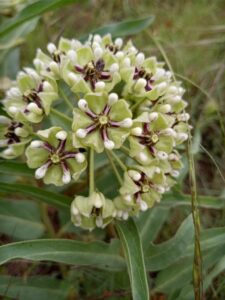
Two of the most important for monarch butterflies are Antelope Horns and Green Milkweed because they are common milkweeds that grow in pastures and along roadsides throughout the central flyway of Texas, the path that most Monarchs take on their migration through Texas.
Antelope Horns, or Asclepias asperula, gets its name from the seed pods that look similar to the horns of an antelope. Its pale, greenish-yellow flowers, tinged maroon, are crowded in round, terminal clusters 3 to 4 inches across at the end of the flower stem. It spreads along the ground and attains 8 to 24 inches in height.
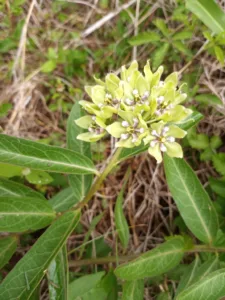
Green Milkweed, or Asclepias viridis, is the most common milkweed in Texas, ranging from deep East Texas to the Edwards Plateau. It typically has wider leaves than Asclepias asperula. The leaf margins are often wavy. Flowers are white and in an umbel, mostly one per plant. Close inspection shows that some rose or purple color is evident in the center of each individual flower. It is sometimes called Green Antelope Horns.
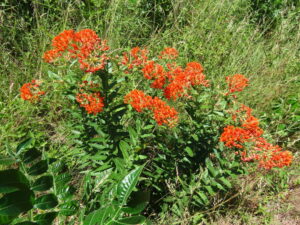
Butterfly Weed, or Asclepias tuberosa, is probably the native milkweed that is most commonly grown by gardeners. It is prized for its large, flat-topped clusters of bright-orange flowers. The flower clusters, 2 to 5 inches across, are at the top of the flowering stem. The abundance of stiff, lance-shaped foliage provides a dark green backdrop for the showy flower heads.
Butterfly weed is available in nurseries and can be grown from seed. It actually has no milky sap, despite being considered a milkweed. Flowers do not usually appear until the plant is well-established.
Another name for it is Pleurisy Root. It has been reported that this milkweed was boiled and eaten as greens and the roots used as a medicine by Indians.
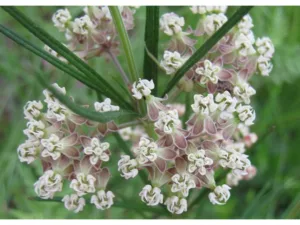
Whorled Milkweed (Asclepias verticillata) is one of the more toxic milkweeds. The leaves grow in a whorl around the stem, hence the common name. Another name is Horsetail Milkweed. Its narrow leaves and stems cause it to blend in with grasses when it is not in bloom.
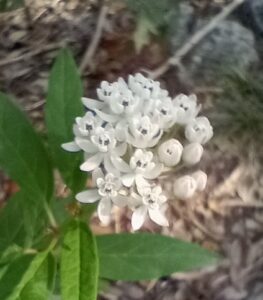
Texas Milkweed (Asclepias texana) is one of the more attractive native milkweeds, perhaps deserving of cultivation. It has slender stems up to 18 inches in height, with narrow elliptic leaves, becoming shrubby with age and found along the canyons of the Edwards Plateau.
Carroll Abbott described it as “covered with tiny snowballs from May to August.”
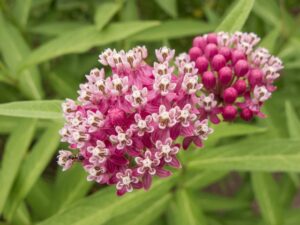
Swamp Milkweed or Pink Milkweed (Asclepias incarnata) grows in wet soils at the edge of streams and ponds. It is one of the largest milkweeds, sometimes as much as five feet tall, with shallow roots. Flowers are rose-colored to light purple.
All plants in the genus Asclepias are probably somewhat toxic, some fatally so, to both humans and animals. The sap of some causes skin irritation in humans. Sensitivity to a toxin varies with a person’s age, weight, physical condition, and individual susceptibility. Children are most vulnerable because of their curiosity and small size.
